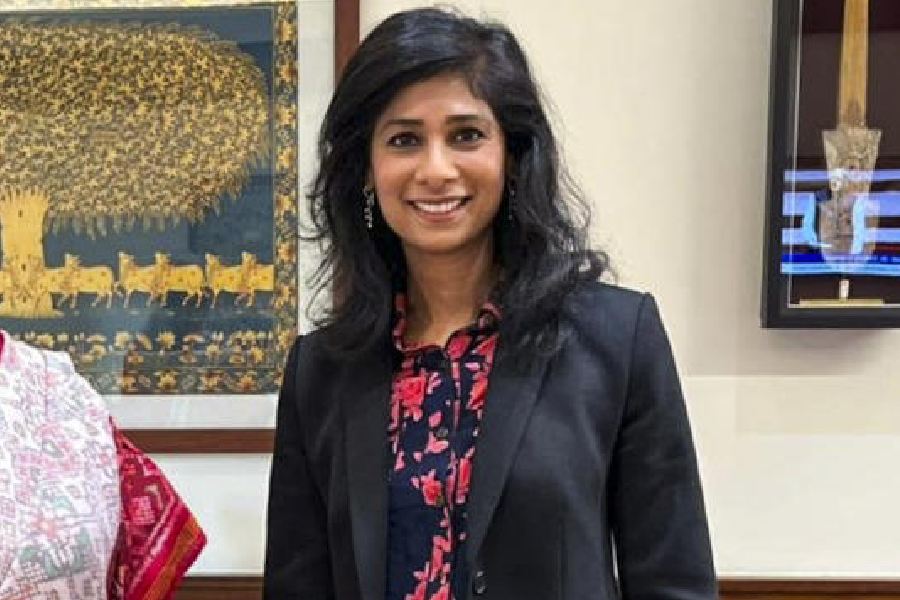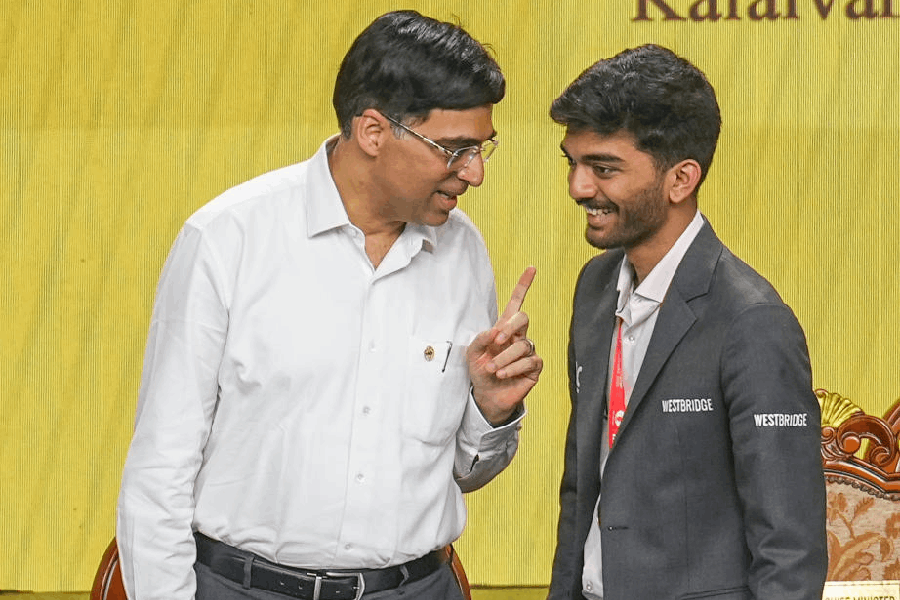 |
 |
| WORK IN PROGRESS: School dropouts train at Gram Tarang centres in Paralakhemundi (above) and Bhubaneswar. Pictures by Prasun Chaudhuri |
Ghashiram Bhalu carefully wields his welding torch at the vocational training institute in Paralakhemundi, a remote town in Orissa’s Gajapati district. Yet the aspiring sheet metal worker could so easily have wielded an automatic gun instead. “The Maoists nearly got me to join them,” says Bhalu, a resident of Puranaguma, a village in the notorious Maoist-dominated Malkangiri district.
The 18-year-old tribal, who escaped a life among the Naxals, is now ready to take his next big leap. As a certified welder he’s set to join an air-conditioning firm near Pune. Bhalu, a school dropout, is one of the lucky few to have been picked up by the Gram Tarang Employability Training Services, the vocational training wing of the Bhubaneswar-based Centurion University. Gram Tarang has tied up with several government and private organisations to impart employment skills to tribal youths in the Naxal-affected districts of Orissa.
Centurion is not alone in its mission to lure the tribal youth away from extremism. A host of other institutes in the state — Xavier’s Institute of Management, Bhubaneswar (XIMB), Kalinga Institute of Social Sciences (KISS) and International Association for Human Values (IAHV) — are offering basic education, vocational training and rural management skills to tribals so that they can either get jobs or explore effective livelihood options.
“These youths pick up the gun because they are impoverished and have no alternative means of employment,” says Mukti K. Mishra, president of Centurion University. Mishra started the university with a fellow academic, D.N. Rao, in Paralakhemundi eight years ago. “Ours was an experiment to create a skilled workforce out of the deprived youth — those who are considered a demographic burden on our rising nation,” adds Mishra.
The experiment seems to have been successful. Recently, the National Skills Development Corporation (NSDC), a not-for-profit body formed by the finance ministry, which plans to make 150 million youth employable by 2022, chose Centurion to train tribal youth in the Naxal-dominated areas of Orissa.
Says Dilip Chenoy, managing director, NSDC, “We are funding projects in places where they are most needed, particularly in the remote and far-flung areas, in order to promote balanced and inclusive growth. The training would enable the local youth to become employable, allow them to participate in India’s growth story and hence provide them a much better alternative to joining rebel or destructive groups.”
The NSDC is pumping Rs 14.5 crore into the project so that Centurion’s Gram Tarang can train 21,000 young men in the next five years in sectors as diverse as construction, textile, automobile and manufacturing.
Bipin B. Das, head of the Centre for Development Research and Training (Cenderet), XIMB’s rural studies wing, however, believes that merely teaching vocational skills won’t transform the tribal belts overnight. “Our aim is to empower the rural poor both economically and socially,” he says. Cenderet has been working since 1988 to create sustainable livelihood options such as organic agriculture and the formation of community grain banks to survive starvation in lean periods. It also works towards their economic empowerment by setting up self-help groups, trade clusters and community health initiatives. Adds P.D. Thomas, dean (HR), XIMB, “Our aim is to help the tribal youth live with dignity and contribute to society.”
Achyuta Samanta, founder and director of KISS — a residential school for tribal children in Bhubaneswar — believes that the best antidote to Naxalism is proper school education. “My school for 15,000 tribal children provides not just basic schooling but also vocational skills along with free food and health facilities,” he says. According to Samanta, some of the students at the school were actually born to Naxal parents. Moreover, the tribals feel secure if their children get admitted to the school because every child is a potential recruit for the rebels. Says Janki Hasda, a Class X student of KISS who hails from Malkangiri, “Back home on the hills, we had hardly anything. Here, we have all that we ever wanted.”
The school also grooms the children in traditional crafts such as metal and stone work and applique stitching. “We market the products and distribute the money so that they can send part of it back to their parents.” Samanta plans to set up similar schools in 20 districts in the Naxal-dominated regions.
IAHV, a unit of The Art of Living Foundation, the Bangalore-based spiritual organisation, is yet another body that is imparting employment skills to the local youth. “Our Youth Leadership Training Programme (YLTP) engages young people in community development,” says Samir Jolly, co-ordinator, YLTP. “We train them in vocational skills such as chemical-free farming. We also impart training in bar bending and masonry in association with the construction company Larsen & Toubro.” Over 75 school dropouts who underwent the training a few months ago have been absorbed in the construction industry.
“Many of them go on to become panchayat representatives and government workers, and hence no longer feel as though they had been victimised or neglected by mainstream India,” says Jolly.
Most tribals drop out of school by Class VII because they need to contribute to the family income. And because there are few employment opportunities for these early school dropouts, they are often led astray by the extremists. The fact that there are hardly any government-run Industrial Training Institutes (ITIs) in the tribal belt that could have trained these dropouts in vocational skills adds to the problem. Says K. Pandia Rajan, founder and chairman, Ma Foi Randstad India, a staffing firm, “Effective training in ITIs could have turned India into the ‘world’s largest pool of trained manpower’. Had they been able to develop employability skills among the rural youth, the latter wouldn’t have been lured into insurgency and terrorism.”
The government has recently taken note of this and is now trying to re-energise the ITIs, especially those in backward areas. Even industry bodies have come forward to “adopt” some of these ITIs. Says Saugat Mukherjee, regional director (east), Confederation of Indian Industry, “We have adopted several ITIs, including one in Balasore in eastern Orissa.”
However, not everyone thinks that skills training alone will end the Naxal revolution. Says Surya Narayan Patra, revenue and information and public relations minister in the Orissa government, “There should be enough commercial activities and local development to engage the youth in their native place.” The state government has, in fact, been investing a huge amount of funds in the Naxal-affected districts under various employment schemes. “The key to drawing the youth into the mainstream lies in winning their trust. Since the Naxals mingle with them it’s easier for them to win the hearts of tribals and exclude them from governance. We need dedicated officials who can work closely with them to deliver better governance,” he adds.
The recently appointed district collector of Gajapati district, Ravindra Pratap Singh, a graduate from the Indian Institute of Management, Calcutta, could be one of those harbingers of change. “We are trying to reach out to the tribals through the effective implementation of such programmes as the Integrated Tribal Development Agency and the skill development training for rural youths,” he says.
For the thousands of Ghashiram Bhalus of Orissa there is light at the end of the tunnel after all.










